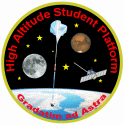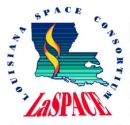



Payload 01 Information
Payload Flight Number:
Institution:
Payload Title:
Application of Cosmic-ray Neutron Measurements to Determine Atmospheric Hydration and Surface Level Hydration
Student Leader:
Faculty Advisor:
Payload class:
Payload ID Number:
01
Mass:
Current:
Serial Downlink:
Analog Downlink:
Serial Commands:
Discrete Commands:
Payload Specification & Integration Plan
Due: -
Delivered:
Payload Integration Certification
Scheduled: -
Actual:
Flight Operation Plan
Due: -
Delivered:
Final Flight / Science Report
Due: -
Delivered:
Abstract:
Cosmic rays constantly bombard Earth’s atmosphere, shattering into a hail of hadronic, muonic, and electromagnetic components. Of all the components, neutrons are of great importance in understanding these atmospheric interactions. One of the main usages of these neutrons is for the detection of water on other terrestrial bodies and on our own. When fast neutrons strike a water molecule, half of the kinetic energy of the neutron is transferred into the hydrogen, slowing the neutron down and lowering its energy. This process is called moderation and by measuring the population of low and high energy neutrons, the relative abundance of water can be ascertained. Much like the LUNAH-MAP project that is tasked with water detection on the moon using a neutron/gamma ray detector, the HART team aims to map out the neutron flux and hydration at altitude and correlate it to neutron flux and ground level hydration in order to get a better understanding of cosmic ray interactions in dense atmospheres and water detection.
Payload Integration Plan:
Science Report:
Monthly Briefings:
|